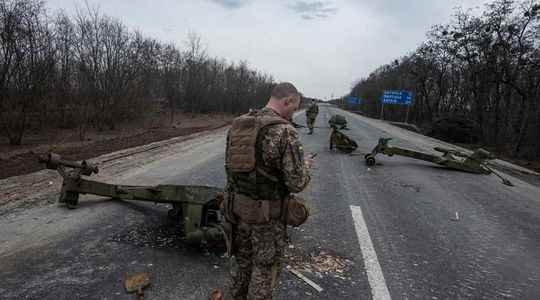The images quickly went around the world. A week after the start of the Russian offensive on Ukrainian soil, the American company Maxar Technologies, which specializes in satellite imagery, unveiled a series of photos of a Russian tank convoy stretching more than 60 kilometers to the north -west of Kyiv. Despite this show of force, on the 33rd day of combat, the Russian forces had still not succeeded in breaking through the Ukrainian defense on the outskirts of the capital. A unit of the Ukrainian special forces is giving them a particular hard time: the Aerorozvidka unit, which has around fifty squadrons of expert drone pilots. According to its commander, Lieutenant-Colonel Yaroslav Honchar, it was thanks to the operations carried out by the latter that the Russian offensive was brought to a complete halt in early March.
The specialists of the Aerorozvidka unit have indeed created an intelligence system in accordance with NATO standards, capable of monitoring the movements of the Russians and coordinating precise air attacks according to the British newspaper The Times. Called Delta, this system gathers information from satellites, sensors located on the front which feed a digital map, reconnaissance drones, or even radio intercepts. Its main purpose is to identify high priority targets (due to the Ukrainian army’s limited ammunition) in order to transmit their coordinates to death squads operating at night.
Modified heavy drones
Thus, at the beginning of March, while the impressive line of tanks was advancing towards the capital, about thirty Ukrainian fighters took advantage of the darkness to approach the column of Russian tanks stealthily, hiding thanks to the forest along the road leading south from kyiv, towards Chernobyl. Driving quads, equipped with night vision goggles, snipers, remote detonating mines and above all heavy octocopter drones equipped with thermal cameras and modified to drop anti-tank grenades, they carried out a decisive ambush near the city of Ivankiv , taking the Russians by surprise as they slept.
“This small unit destroyed two or three vehicles at the head of this convoy during the night, and after that it was blocked. They stayed there two more nights, and [ont détruit] many vehicles, says Lieutenant-Colonel Yaroslav Honchar to the Guardian. The first echelon of the Russian force was stuck without heat, without oil, without bombs and without gas.” The latter also claims that, from the start of the war, his unit helped to foil a Russian airborne attack on the airport of Hostomel, northwest of kyiv, using drones to locate and then bomb about 200 Russian paratroopers hiding at one end of the airfield.
If these operations were a success, the repeated power cuts due to the Russian attacks caused problems of internet connection in certain areas of Ukraine, jeopardizing the precision of the Ukrainian strikes. However, at night, Russian soldiers generally place their tanks in villages, “knowing that conventional artillery cannot risk hitting civilians”, explains one of the Aerorozvidka pilots to the Times. Ukrainian Deputy Prime Minister Mykhailo Fedorov therefore quickly challenged Elon Musk on Twitter, asking him to make his secure Starlink satellite system available. The American billionaire immediately accepted the request. Thanks to Starlink, Ukrainian death squads are accurate enough to hit their targets without causing collateral damage, according to Aerorozvidka pilots.
300 missions per day
If the Aerorozvidka unit seems today to be a determining element for the Ukrainian army, it was originally only a group of civilian defenders operating thanks to crowdfunding. In 2014, when it was created by young university-educated Ukrainians who took part in the Maidan uprising that ousted several corrupt leaders from power, the team was made up of engineers, software designers and drone enthusiasts. The latter first used commercial surveillance drones, before developing their own models and putting their technical skills at the service of the resistance against the first Russian invasion in Crimea and the Donbass region. The efficiency of the unit earned him integration into the Ukrainian armed forces in 2015.
Aerorozvidka was then disbanded in 2019 by the then defense minister before being urgently reactivated in October when the threat of a Russian invasion loomed. According to The Times, it now carries out nearly 300 missions a day in Ukraine. At this rate, the military is having difficulty replacing lost equipment due to a limited supply of drones and components. In addition, some advanced modems and thermal cameras manufactured in the United States and Canada are subject to export controls. The special unit therefore resorts to crowdfunding and calls on a global network of supporters to find the necessary elements on the internet.
